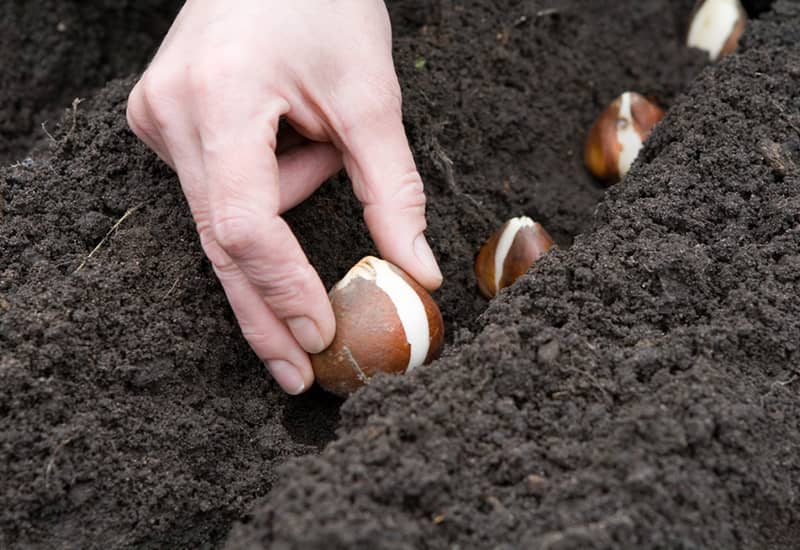Planting spring flowering bulbs before winter sets in is a gardener’s version of a 401K. Having those early flowers to look forward to helps us through the cold months of winter. But if you want that payoff in the spring, you need to make your payment now by getting out there and putting bulbs in the ground.

What to Plant
Planting a variety of different bulbs in your landscape allows you to create a progression of blooms from the last days of winter into the early summer. Starting with early flowering Crocus, Chionodoxa (glory of the snow), Galanthus (snowdrops) and dwarf daffodils. These harbingers of spring will signal winter’s end. Followed by fragrant Hyacinth and full-size daffodils that tell us spring is in full gear. And then of course, tulips are the crescendo of the bulb season, blooming in every color of the rainbow. But it doesn’t have to end there. Late blooming giant allium can add a unique element to the garden with their purple or white balls of color in the beginning of summer.

How to Plant
To get the most out of your bulb budget, you should make sure to plant them where you can see them and where they can thrive. Most bulbs need well drained soil to winter-over and will rot if planted in low, wet areas. You also want to think about planting in locations that will be visible from inside the house or in areas of the garden that you frequent when the flowers are in bloom. (For example- Crocuses in the pool area may not be your best bet.)

Planting in bunches or masses of one type of flower can be more visually appealing than scattering stray flowers throughout the landscape. This way you can excavate an area to the appropriate depth, space a dozen bulbs in the dug-out area, and then back fill making the planting easier. Fertilizing with Bulbtone when you plant is always a good idea.
If you want to get multiple seasons out of your bulbs, you should leave the foliage after the flowers have finished to “recharge” the bulb for next year. You can hide the yellowing leaves of the finished bulbs by planting the bulbs amongst perennial flowers such as hostas and daylilies. Some bulbs such as daffodils naturalize better than others (such as tulips).

If you have problems with squirrels or other animals digging up your bulbs, you can do a few things to dissuade them. One is to cover the planting area with a thin layer of newspaper or turkey wire when you backfill. The newspaper should break down before the bulbs emerge, and the flowers should be able to grow through the wire. Another option is selecting plants the rodents don’t like to eat such as Narcissus or Allium.
When to Plant
Now! This is the time to get your bulbs in the ground before the ground freezes. Hicks Nurseries has a great selection of bulbs available, so make your investment for a more beautiful spring now. Learn more about bulb planting here.
By Ken Muellers, Lifetime CNLP
Additional Information:
